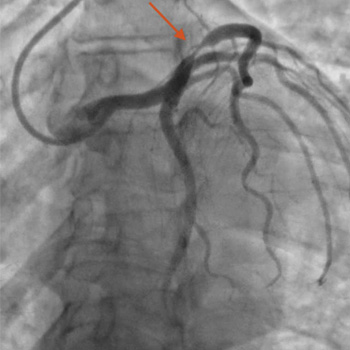Keywords
Essential thrombocythaemia, anagrelide, myocardial infarction, thrombosis
Abstract
Anagrelide is a medication primarily used to manage thrombocytosis, an abnormal increase in platelet levels in the blood. It is often prescribed for patients with myeloproliferative disorders, such as essential thrombocythaemia (ET). Given the heightened susceptibility to thromboembolism associated with this condition, the primary emphasis in treatment revolves around reducing the risk of thrombotic events through the administration of cytotoxic agents. While anagrelide is generally effective in reducing platelet counts, it comes with potential side effects, including an increased risk of certain thrombotic events. Anagrelide acts by inhibiting megakaryocyte maturation and platelet release, thereby reducing platelet production. However, this platelet-lowering effect may be accompanied by an increase in platelet activation and reactivity, which could contribute to a prothrombotic state. We present a case of a 60-year-old female with a history of ET, managed with anagrelide and hydroxyurea therapy, who experienced an acute ST-elevation myocardial infarction.
References

Views: 280
HTML downloads: 10
PDF downloads: 148
Published:
2024-02-28
Issue:
2024: Vol 11 No 3
(view)










